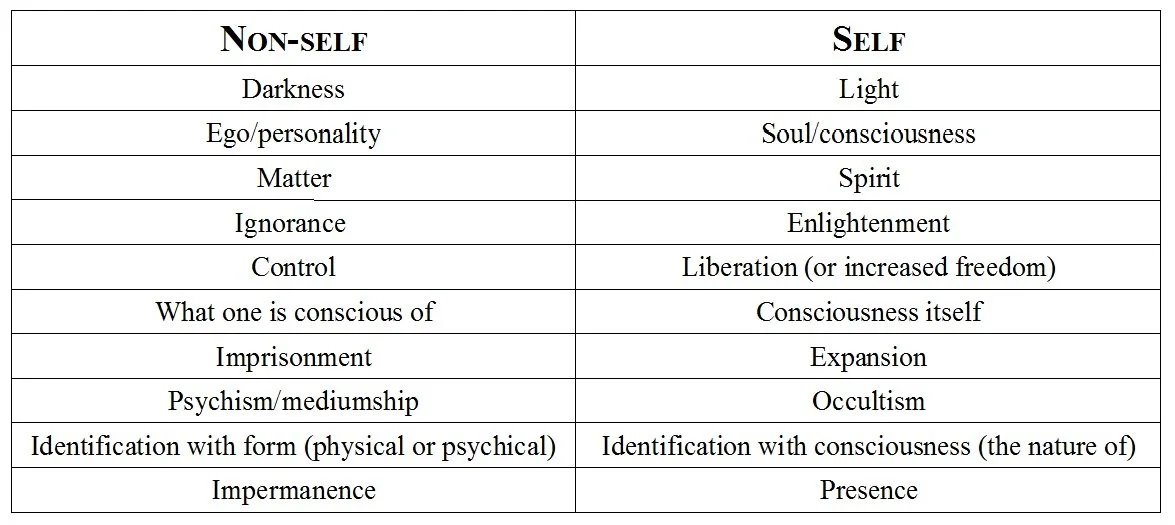Authentic spirituality starts when one begins to work inwardly at achieving this realization: the very fundamental distinction between the Self, and the non-self. The self – our true Self – is usually** referred to as the Soul, or the nature of consciousness itself. The non-self is usually called nowadays** “the ego” or “personality”.
This distinction is by no means a quick and easy thing to achieve, for the world in which we live is basically the world of the non-self. So much so, that we ignore what the Self is. In other words, the Self, Soul or consciousness, is deeply immersed into a world that is not its own, a world that is in fact very different from its own. This causes the phenomenon called identification of the self, with the non-self.
As elsewhere stated, we tend to strongly believe “I am that person”, “my body”, “my opinions”, “my emotions/desires and thoughts”, etc. We are indeed identified with and strongly attached to these things, to our personality and all it contains. The difficulty that consciousness has in arriving at a realization of its own nature, comes from the innate characteristics of what ego is made of.
The following table may help clarify of few of these ideas.
Those polarities appear opposite to each other, but in a truer sense, they are complementary. They both are 100% necessary for the human experience. However, one must dominate the other. When the distinction between the self and the non-self hasn't been realized, the column on the left dominates. Gradually, if we work tirelessly to increase our capacity to be more attentive, vigilant, or simply more conscious, balance will eventually switch to the column on the right.
Again, this realization is long and difficult to achieve. The polarity “matter” very easily veils, encumbers, encases, darkens consciousness, for it is its nature to do so. Matter, as we understand the term, is not merely visible, empirical matter, but is psychical matter as well. Thoughts, emotions, and desires are also matter, material (but not sensory) forms, who aren't part of the nature of consciousness (since we can be conscious of them). Matter just does what it does, according to its own laws, its own dynamism.
Therefore, the Soul in incarnation ever faces opposition in matter. Incarnation in a world of matter, through a vehicle of matter, is a challenge for the soul, who is forever seeking an expansion of its consciousness, for expansion is its nature, opposite to that of matter. It seeks to express itself more and more perfectly and with increased freedom within this world, and not to remain limited. It seeks to become able to enlighten everything it comes into contact with, and not to be caught and darkened by identification with everything that is the non-self.
Conscious efforts to try to free one's consciousness usually supposes a relatively significant, yet not complete level of freedom. The degree of actual “light” in someone's consciousness, that is, how much someone is relatively free (or not) of identification with ego, will determine what such a person will be able to accomplish, express, and experience in this world, the type of karma he or she will have to deal with. This is a very complex subject, and I will write more about it in later posts.
**In Theosophical literature, and other very high quality occult books (such as those of A.A. Bailey) from more or less the same era, the term “ego” is used to designate the higher Self, or Soul.
